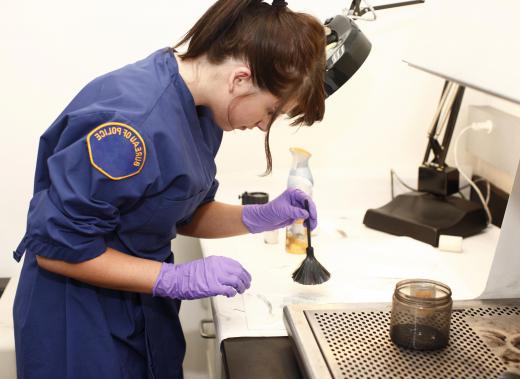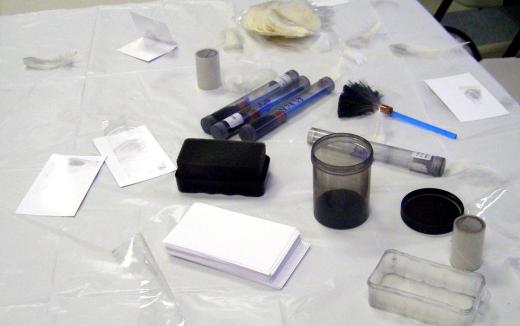What are the Different Methods of Fingerprint Detection?
There are a number of different methods of fingerprint detection, and the method used generally depends on the type of fingerprint and the substance on which the print appears. One of the simplest types of detection is by visually finding and photographing a visible fingerprint on a surface. This is not practical for latent fingerprints, however, and so a number of other means are usually employed that often involve the application of some kind of chemical that makes fingerprints visible or allows them to be captured through other means. Newer methods of fingerprint detection are typically meant to capture the image of a fingerprint without introducing other chemicals that can potentially damage the fingerprint as evidence.
Fingerprint detection is typically the process of finding and documenting fingerprints during some form of criminal investigation. It has been used for more than a century in efforts to identify people who may have been involved with a criminal action, typically unidentified suspects. The process usually involves finding fingerprints through a number of different methods and then photographing or otherwise capturing an image of the prints for future use.

There are generally three different types of fingerprints that can be found and documented through fingerprint detection. The first two types are both visible forms of fingerprints, and finding them usually involves basic visual searching and observation. Indented or molded fingerprints are physically made in a soft or malleable substance such as wax or putty; visible fingerprints are made in a way that is easy to see. This can include fingerprints that are positive images resulting from a finger that had ink or blood on it and placed on a surface, leaving an image of the fingerprint. There are also negative images such as a dusty shelf that reveals a fingerprint left behind in the dust removed by a finger that has touched the shelf.

The third type of fingerprints that can be found through fingerprint detection are latent prints, those not readily visible through basic visual searching. These prints are often left on surfaces and consist of the natural oils from the skin of a finger that have remained on the surface. Fingerprint detection of these types of prints often involves processes that allow the prints to become visible for documentation.

This sort of fingerprint detection is usually achieved through the application of chemical liquids or powders, such as 1,8-Diazaflouren-9-one (DFO), that make the oils or amino acids in the fingerprint fluoresce in a way that can be seen or otherwise photographed. There are certain issues with these methods, however, such as the reliance on contrast between the fingerprint and the surface on which it is located and the potential for such chemicals to destroy or corrupt the print. Newer methods include the use of techniques such as micro-x-ray fluorescence (MXRF) to not change the fingerprint, but instead capture the image digitally. This type of system detects and photographs the salts and other chemicals present in human sweat in order to capture an image without applying any chemicals to it.
AS FEATURED ON:
AS FEATURED ON:













Discuss this Article
Post your comments